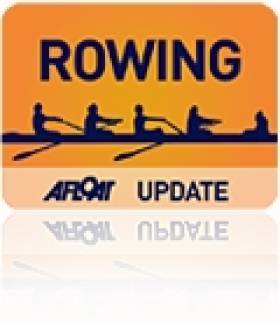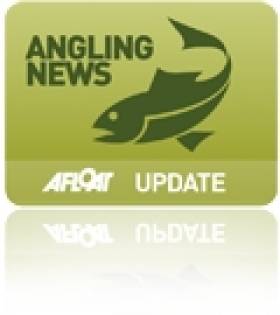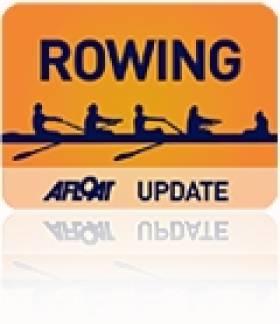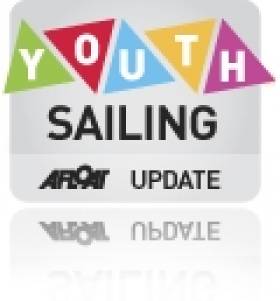| |
|---|
| | | |
| |
| | | | 56th ERNE HEAD OF THE RIVER |
|---|
| | | | | Saturday 2nd March 2013 |
| | | | | Timed |
| | | | | Finishing Crew Mins:Secs |
| | | | | Position No. Crew Identity Class Rowing Time |
| | | | | 1 1 GM/NUIG/St.JoesMS 8 19:30 |
| | | | | 2 3 U.C.D. BC MS 8 19:33 |
| | | | | 3 2 QUBBC MS 8 19:49 |
| | | | | 4 4 DUBC MS 8 19:52 |
| | | | | 5 8 DUBC MI 8 20:08 |
| | | | | 5 = 9 U.C.D. BC A MI 8 20:08 |
| | | | | 7 6 NUIG BC MI 8 20:09 |
| | | | | 8 5 St Michaels RC MS 8 20:30 |
| | | | | 9 13 Neptune RC MJ18 8 20:55 |
| | | | | 10 12 UCD BC B MI 8 21:03 |
| | | | | 11 20 U.C.D. BC A MN 8 21:10 |
| | | | | 12 25 DUBC B MN 8 21:11 |
| | | | | 12 = 14 Portora BC MJ18 8 21:11 |
| | | | | 14 19 QUBBC A MN 8 21:23 |
| | | | | 15 21 NUIG BC MN 8 21:37 |
| | | | | 16 10 St Michaels RC MI 8 21:46 |
| | | | | 17 15 MCB BC MJ18 8 22:09 |
| | | | | 18 30 Garda BC MI 4x 22:11 |
| | | | | 19 18 DUBC A MN 8 22:17 |
| | | | | 19 = 22 Portora/BBC/CAIBC MS 4x 22:17 |
| | | | | 21 33 Bann RC MJ16 8 22:18 |
| | | | | 22 24 U.C.D.L B.C A WS 8 22:24 |
| | | | | 23 16 RBAI BC MJ18 8 22:26 |
| | | | | 24 11 CAIBC MI 8 22:35 |
| | | | | 25 27 QUBBC B MN 8 22:36 |
| | | | | 26 35 MCB BC MJ16 8 22:47 |
| | | | | 27 40 Portora BC MI 4+ 22:57 |
| | | | | 28 23 LSC MS 4x 23:06 |
| | | | | 29 28 DUBC C MN 8 23:08 |
| | | | | 30 17 Blackrock BC MJ18 8 23:19 |
| | | | | 31 41 BBC MM 8 E 23:22 |
| | | | | 32 32 Portora BC MJ16 8 23:36 |
| | | | | 33 42 BRC A MM 8 C 23:38 |
| | | | | 34 43 BRC/BBC B MM 8 E 23:39 |
| | | | | 35 29 U.C.D. BC MI 4x 23:41 |
| | | | | 36 47 Bann RC WI 8 23:44 |
| | | | | 37 45 QULBC WI 8 23:51 |
| | | | | 38 31 U.C.D.L.B.C B WS 8 23:58 |
| | | | | 39 34 CAIBC MJ16 8 24:08 |
| | | | | 40 63 CAIBC MJ18 4+ 24:09 |
| | | | | 41 38 BBC MS 4+ 24:10 |
| | | | | 42 48 Portora BC WJ18 8 24:13 |
| | | | | 43 50 Bann RC MM 8 C 24:31 |
| | | | | 44 49 LVBC MM 8 E 24:42 |
| | | | | 45 44 OCBC/TCBC MM 8 F 24:47 |
| | | | | 46 60 St Michaels BC WS 4+ 24:52 |
| | | | | 47 53 QULBC A WN 8 25:11 |
| | | | | 48 57 BBC WM 8 D 25:13 |
| | | | | 49 59 Portora BC WS 4x 25:19 |
| | | | | 50 62 Bann RC MJ18 4+ 25:42 |
| | | | | 51 52 Molesey B C MM 8 G 25:56 |
| | | | | 52 37 MCB BC B MJ16 8 26:14 |
| | | | | 53 54 BRC WN 8 26:33 |
| | | | | 54 55 QULBC B WN 8 26:48 |
| | | | | 55 58 Neptune BC WS 4x 27:04 |
| | | | | 56 51 Portadown BC MM 8 D 27:09 |
| | | | | 57 66 Portora BC A WJ16 8 27:16 |
| | | | | 58 36 Portora BC B MJ16 8 27:22 |
| | | | | 59 61 BRC WS 4+ 27:29 |
| | | | | 60 65 CAIBC MJ16 4x 27:53 |
| | | | | 61 67 Portora BC B WJ16 8 28:52 |
| | | | | 62 56 QULBC C WN8 29:55 |
| | | | | 63 = 7 QUBBC MI 8 Did Not Row |
| | | | | 63 = 26 U.C.D BC B MN 8 Did Not Row |
| | | | | 63 = 39 DUBC MI 4+ Did Not Row |
| | | | | 63 = 46 NUIG BC WI 8 Did Not Row |
| | | | | 63 = 64 Blackrock BC MJ18 4x Did Not Row |
| | | | | The positions given are those relative to all crews participating. |
| | | | | Positions within a Class are to be determined by inspection. |
| |

The Irish Canoe Union has put out a call for volunteers to assist in the running of this year's Paddlefest event in Co Wicklow.
Paddlefest 2011 will be taking place on 25 and 26 September at the Hidden Valley Holiday Park in Rathdrum.
The junior paddling festival held every September. Each year 200 to 300 juniors participate in a variety of activities based around the different disciplines kayaking has to offer.
This year the Irish Canoe Union will be helping out with the organisation of the event, and is looking for volunteers to help give the children the opportunity to go kayaking over the corse of the weekend.
Anyone interested and available to help out should contact Benny Cullen at the Irish Canoe Union at [email protected].The Irish Canoe Union has put out a call for volunteers to assist in the running of this year's Paddlefest event in Co Wicklow.
Paddlefest 2011 will be taking place on 25 and 26 September at the Hidden Valley Holiday Park in Rathdrum.
The junior paddling festival held every September. Each year 200 to 300 juniors participate in a variety of activities based around the different disciplines kayaking has to offer.
This year the Irish Canoe Union will be helping out with the organisation of the event, and is looking for volunteers to help give the children the opportunity to go kayaking over the corse of the weekend.
Anyone interested and available to help out should contact Benny Cullen at the Irish Canoe Union at [email protected].
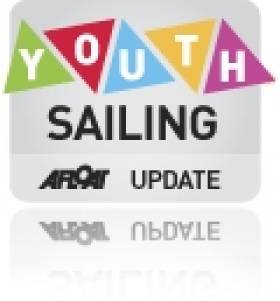
There has been a call for the Irish Sailing Association (ISA) to take a lead in the big decisions that face youth sailors on what classes to sail to after they leave the ranks of the Optimist, Topper and Feva classes. The call comes from a leading junior organiser who does not wish to be named.
Although youth sailing is buoyant in Ireland it is known there is a 'high attrition rate' among teenagers. The lack of transfer in to senior dinghy classes has been a cause of concern for many clubs around the country.
The comments follow a recently published article on Afloat.ie promoting the RS 200 dinghy as a progression boat for juniors.
"We need a class that will keep youths engaged. The 420 and 29er are great boats but require higher levels of boathandling, are much more competitive and tend to attract the top sailors"
"While the ISA's Olympic ambitions are great to see, it will fail the sport as a whole if it does not tackle this gaping need, the organiser says.
Read the RS 200 article by Ciara Byrne and the junior organiser's comments here
Dun Laoghaire's Royal St. George Yacht Club has announced that its inaugural Junior Spring Open, sponsored by Craftinsure, will be held on the 19th & 20th of March 2011. This event promises to be a great kick start to the Junior Sailing Season for the Optimist, 420, Feva and Laser Classes.
There will be both Regatta and Main Fleets, Regatta Coaches on the courses and the event will count as an Optimist Pre-Trials and Pre-Regional event. With the ISA Mitsubishi Youth National Championship being held in the same sailing area at the end of April, this event is a great opportunity for sailors from all around the country to get some practise in the local waters.
There will be entertainment for sailors and parents on both evenings, evening dinners and, of course, full Six Nations Rugby coverage on the Saturday throughout the Club. There will also be live-tweeting from the water throughout the event - follow this live action unfold at www.twitter.com/rsgyc.
For further information and to enter online please visit www.rsgyc.ie. The Entrance Fee is €85 for Fevas & 420s and €55 for Oppies & Lasers.
It was a very long day of sailing in very light conditions for the Juniors on the second and final day of the All Ireland Junior Championship writes Claire Bateman. PRO Richard Leonard raced the fleet on the Curlane Bank in Cork harbour and was very fortunate to be able to get in three races in extremely difficult conditions.
The final result saw Philip Doran of Courtown Harbour SC taking first place with Rory Lynch of of Blessington Sailing Club second and Ross Vaughan of
Royal North of Ireland YC third.
In the Girls Fleet Sophie Murphy of Quoile YC took first place with Emma Geary of RCYC second and Katherine Geoghegan of Dungarvan Harbour SC third.
Photos of the Junior All Ireland Prizegiving and competition by Bob Bateman HERE.

The Irish Coast Guard
The Irish Coast Guard is Ireland's fourth 'Blue Light' service (along with An Garda Síochána, the Ambulance Service and the Fire Service). It provides a nationwide maritime emergency organisation as well as a variety of services to shipping and other government agencies.
The purpose of the Irish Coast Guard is to promote safety and security standards, and by doing so, prevent as far as possible, the loss of life at sea, and on inland waters, mountains and caves, and to provide effective emergency response services and to safeguard the quality of the marine environment.
The Irish Coast Guard has responsibility for Ireland's system of marine communications, surveillance and emergency management in Ireland's Exclusive Economic Zone (EEZ) and certain inland waterways.
It is responsible for the response to, and co-ordination of, maritime accidents which require search and rescue and counter-pollution and ship casualty operations. It also has responsibility for vessel traffic monitoring.
Operations in respect of maritime security, illegal drug trafficking, illegal migration and fisheries enforcement are co-ordinated by other bodies within the Irish Government.
On average, each year, the Irish Coast Guard is expected to:
- handle 3,000 marine emergencies
- assist 4,500 people and save about 200 lives
- task Coast Guard helicopters on missions
The Coast Guard has been around in some form in Ireland since 1908.
Coast Guard helicopters
The Irish Coast Guard has contracted five medium-lift Sikorsky Search and Rescue helicopters deployed at bases in Dublin, Waterford, Shannon and Sligo.
The helicopters are designated wheels up from initial notification in 15 minutes during daylight hours and 45 minutes at night. One aircraft is fitted and its crew trained for under slung cargo operations up to 3000kgs and is available on short notice based at Waterford.
These aircraft respond to emergencies at sea, inland waterways, offshore islands and mountains of Ireland (32 counties).
They can also be used for assistance in flooding, major inland emergencies, intra-hospital transfers, pollution, and aerial surveillance during daylight hours, lifting and passenger operations and other operations as authorised by the Coast Guard within appropriate regulations.
Irish Coastguard FAQs
The Irish Coast Guard provides nationwide maritime emergency response, while also promoting safety and security standards. It aims to prevent the loss of life at sea, on inland waters, on mountains and in caves; and to safeguard the quality of the marine environment.
The main role of the Irish Coast Guard is to rescue people from danger at sea or on land, to organise immediate medical transport and to assist boats and ships within the country's jurisdiction. It has three marine rescue centres in Dublin, Malin Head, Co Donegal, and Valentia Island, Co Kerry. The Dublin National Maritime Operations centre provides marine search and rescue responses and coordinates the response to marine casualty incidents with the Irish exclusive economic zone (EEZ).
Yes, effectively, it is the fourth "blue light" service. The Marine Rescue Sub-Centre (MRSC) Valentia is the contact point for the coastal area between Ballycotton, Co Cork and Clifden, Co Galway. At the same time, the MRSC Malin Head covers the area between Clifden and Lough Foyle. Marine Rescue Co-ordination Centre (MRCC) Dublin covers Carlingford Lough, Co Louth to Ballycotton, Co Cork. Each MRCC/MRSC also broadcasts maritime safety information on VHF and MF radio, including navigational and gale warnings, shipping forecasts, local inshore forecasts, strong wind warnings and small craft warnings.
The Irish Coast Guard handles about 3,000 marine emergencies annually, and assists 4,500 people - saving an estimated 200 lives, according to the Department of Transport. In 2016, Irish Coast Guard helicopters completed 1,000 missions in a single year for the first time.
Yes, Irish Coast Guard helicopters evacuate medical patients from offshore islands to hospital on average about 100 times a year. In September 2017, the Department of Health announced that search and rescue pilots who work 24-hour duties would not be expected to perform any inter-hospital patient transfers. The Air Corps flies the Emergency Aeromedical Service, established in 2012 and using an AW139 twin-engine helicopter. Known by its call sign "Air Corps 112", it airlifted its 3,000th patient in autumn 2020.
The Irish Coast Guard works closely with the British Maritime and Coastguard Agency, which is responsible for the Northern Irish coast.
The Irish Coast Guard is a State-funded service, with both paid management personnel and volunteers, and is under the auspices of the Department of Transport, Tourism and Sport. It is allocated approximately 74 million euro annually in funding, some 85 per cent of which pays for a helicopter contract that costs 60 million euro annually. The overall funding figure is "variable", an Oireachtas committee was told in 2019. Other significant expenditure items include volunteer training exercises, equipment, maintenance, renewal, and information technology.
The Irish Coast Guard has four search and rescue helicopter bases at Dublin, Waterford, Shannon and Sligo, run on a contract worth 50 million euro annually with an additional 10 million euro in costs by CHC Ireland. It provides five medium-lift Sikorsky S-92 helicopters and trained crew. The 44 Irish Coast Guard coastal units with 1,000 volunteers are classed as onshore search units, with 23 of the 44 units having rigid inflatable boats (RIBs) and 17 units having cliff rescue capability. The Irish Coast Guard has 60 buildings in total around the coast, and units have search vehicles fitted with blue lights, all-terrain vehicles or quads, first aid equipment, generators and area lighting, search equipment, marine radios, pyrotechnics and appropriate personal protective equipment (PPE). The Royal National Lifeboat Institution (RNLI) and Community Rescue Boats Ireland also provide lifeboats and crews to assist in search and rescue. The Irish Coast Guard works closely with the Garda Siochána, National Ambulance Service, Naval Service and Air Corps, Civil Defence, while fishing vessels, ships and other craft at sea offer assistance in search operations.
The helicopters are designated as airborne from initial notification in 15 minutes during daylight hours, and 45 minutes at night. The aircraft respond to emergencies at sea, on inland waterways, offshore islands and mountains and cover the 32 counties. They can also assist in flooding, major inland emergencies, intra-hospital transfers, pollution, and can transport offshore firefighters and ambulance teams. The Irish Coast Guard volunteers units are expected to achieve a 90 per cent response time of departing from the station house in ten minutes from notification during daylight and 20 minutes at night. They are also expected to achieve a 90 per cent response time to the scene of the incident in less than 60 minutes from notification by day and 75 minutes at night, subject to geographical limitations.
Units are managed by an officer-in-charge (three stripes on the uniform) and a deputy officer in charge (two stripes). Each team is trained in search skills, first aid, setting up helicopter landing sites and a range of maritime skills, while certain units are also trained in cliff rescue.
Volunteers receive an allowance for time spent on exercises and call-outs. What is the difference between the Irish Coast Guard and the RNLI? The RNLI is a registered charity which has been saving lives at sea since 1824, and runs a 24/7 volunteer lifeboat service around the British and Irish coasts. It is a declared asset of the British Maritime and Coast Guard Agency and the Irish Coast Guard. Community Rescue Boats Ireland is a community rescue network of volunteers under the auspices of Water Safety Ireland.
No, it does not charge for rescue and nor do the RNLI or Community Rescue Boats Ireland.
The marine rescue centres maintain 19 VHF voice and DSC radio sites around the Irish coastline and a digital paging system. There are two VHF repeater test sites, four MF radio sites and two NAVTEX transmitter sites. Does Ireland have a national search and rescue plan? The first national search and rescue plan was published in July, 2019. It establishes the national framework for the overall development, deployment and improvement of search and rescue services within the Irish Search and Rescue Region and to meet domestic and international commitments. The purpose of the national search and rescue plan is to promote a planned and nationally coordinated search and rescue response to persons in distress at sea, in the air or on land.
Yes, the Irish Coast Guard is responsible for responding to spills of oil and other hazardous substances with the Irish pollution responsibility zone, along with providing an effective response to marine casualties and monitoring or intervening in marine salvage operations. It provides and maintains a 24-hour marine pollution notification at the three marine rescue centres. It coordinates exercises and tests of national and local pollution response plans.
The first Irish Coast Guard volunteer to die on duty was Caitriona Lucas, a highly trained member of the Doolin Coast Guard unit, while assisting in a search for a missing man by the Kilkee unit in September 2016. Six months later, four Irish Coast Guard helicopter crew – Dara Fitzpatrick, Mark Duffy, Paul Ormsby and Ciarán Smith -died when their Sikorsky S-92 struck Blackrock island off the Mayo coast on March 14, 2017. The Dublin-based Rescue 116 crew were providing "top cover" or communications for a medical emergency off the west coast and had been approaching Blacksod to refuel. Up until the five fatalities, the Irish Coast Guard recorded that more than a million "man hours" had been spent on more than 30,000 rescue missions since 1991.
Several investigations were initiated into each incident. The Marine Casualty Investigation Board was critical of the Irish Coast Guard in its final report into the death of Caitriona Lucas, while a separate Health and Safety Authority investigation has been completed, but not published. The Air Accident Investigation Unit final report into the Rescue 116 helicopter crash has not yet been published.
The Irish Coast Guard in its present form dates back to 1991, when the Irish Marine Emergency Service was formed after a campaign initiated by Dr Joan McGinley to improve air/sea rescue services on the west Irish coast. Before Irish independence, the British Admiralty was responsible for a Coast Guard (formerly the Water Guard or Preventative Boat Service) dating back to 1809. The West Coast Search and Rescue Action Committee was initiated with a public meeting in Killybegs, Co Donegal, in 1988 and the group was so effective that a Government report was commissioned, which recommended setting up a new division of the Department of the Marine to run the Marine Rescue Co-Ordination Centre (MRCC), then based at Shannon, along with the existing coast radio service, and coast and cliff rescue. A medium-range helicopter base was established at Shannon within two years. Initially, the base was served by the Air Corps.
The first director of what was then IMES was Capt Liam Kirwan, who had spent 20 years at sea and latterly worked with the Marine Survey Office. Capt Kirwan transformed a poorly funded voluntary coast and cliff rescue service into a trained network of cliff and sea rescue units – largely voluntary, but with paid management. The MRCC was relocated from Shannon to an IMES headquarters at the then Department of the Marine (now Department of Transport) in Leeson Lane, Dublin. The coast radio stations at Valentia, Co Kerry, and Malin Head, Co Donegal, became marine rescue-sub-centres.
The current director is Chris Reynolds, who has been in place since August 2007 and was formerly with the Naval Service. He has been seconded to the head of mission with the EUCAP Somalia - which has a mandate to enhance Somalia's maritime civilian law enforcement capacity – since January 2019.
- Achill, Co. Mayo
- Ardmore, Co. Waterford
- Arklow, Co. Wicklow
- Ballybunion, Co. Kerry
- Ballycotton, Co. Cork
- Ballyglass, Co. Mayo
- Bonmahon, Co. Waterford
- Bunbeg, Co. Donegal
- Carnsore, Co. Wexford
- Castlefreake, Co. Cork
- Castletownbere, Co. Cork
- Cleggan, Co. Galway
- Clogherhead, Co. Louth
- Costelloe Bay, Co. Galway
- Courtown, Co. Wexford
- Crosshaven, Co. Cork
- Curracloe, Co. Wexford
- Dingle, Co. Kerry
- Doolin, Co. Clare
- Drogheda, Co. Louth
- Dun Laoghaire, Co. Dublin
- Dunmore East, Co. Waterford
- Fethard, Co. Wexford
- Glandore, Co. Cork
- Glenderry, Co. Kerry
- Goleen, Co. Cork
- Greencastle, Co. Donegal
- Greenore, Co. Louth
- Greystones, Co. Wicklow
- Guileen, Co. Cork
- Howth, Co. Dublin
- Kilkee, Co. Clare
- Killala, Co. Mayo
- Killybegs, Co. Donegal
- Kilmore Quay, Co. Wexford
- Knightstown, Co. Kerry
- Mulroy, Co. Donegal
- North Aran, Co. Galway
- Old Head Of Kinsale, Co. Cork
- Oysterhaven, Co. Cork
- Rosslare, Co. Wexford
- Seven Heads, Co. Cork
- Skerries, Co. Dublin Summercove, Co. Cork
- Toe Head, Co. Cork
- Tory Island, Co. Donegal
- Tramore, Co. Waterford
- Waterville, Co. Kerry
- Westport, Co. Mayo
- Wicklow
- Youghal, Co. Cork
Sources: Department of Transport © Afloat 2020
Get Our Daily Digest
The Afloat daily newsletter highlights the best of our editors' picks, as well as the latest content from other popular sections of our website.
View Previous Editions Here
We will only ever use your details to send you our enews and never pass them onto third parties.
| |




























